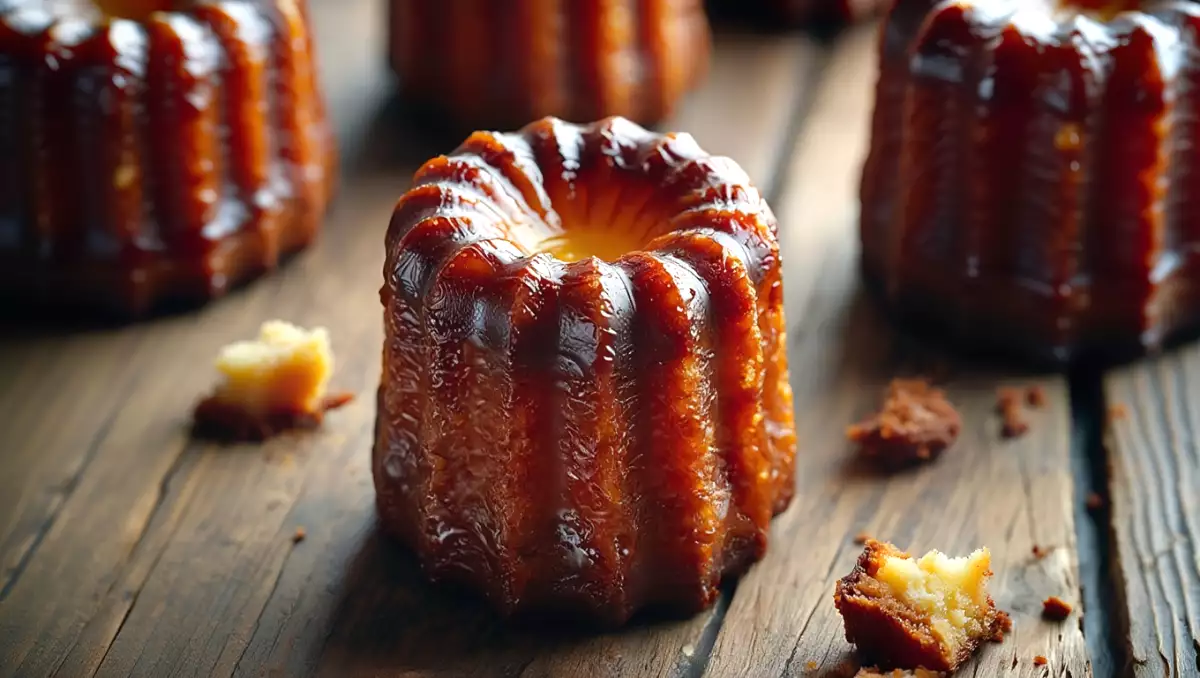Canelé: the French lesson on how to use what is left over

Bordeaux is famous for its wines, but it holds other less obvious treasures. Among them, a small burnished pastry that smells of vanilla and rum: the canelé. On the outside, a dark, shiny crust; on the inside, a tender, almost moist crumb that melts calmly. Born more than three centuries ago, this tiny pastry sums up better than any other the French philosophy of "rien ne se perd, tout se transforme": nothing is wasted, everything is transformed. It is the story of how ingenuity turned a surplus into a symbol of elegance.
From the cellars to the convent
Bordeaux, 18th century.
A city perfumed by wine and the humidity of the Garonne, where barrels rolled down cobblestone streets on their way to the port and global trade passed through its warehouses. Wine was its soul, its wealth, its language. In each cellar, winemakers followed a precise ritual: clarifying the wine with egg whites. Unlike other European regions, which resorted to gelatins or fish powder, Bordeaux chose the noblest method: whipped egg whites, capable of trapping impurities and leaving the wine clean and shiny before export.
But that process gave rise to a small domestic dilemma: thousands of leftover egg yolks that no one knew how to use. In a city without refrigerators or fancy confectioneries, that surplus was almost a useless luxury, an irony of abundance.
A few streets away from the port, in the convent of the Annunciation, the nuns received baskets of halved eggs every week. The whites had already fulfilled their destiny; the yolks awaited theirs. In those silent kitchens, where the smell of wax mingled with that of freshly baked bread, someone - no one knows who - decided to give them meaning.
They beat the yolks with flour, milk, butter and sugar: humble ingredients, common in any pantry. They poured the dough into small fluted copper molds and brought them close to the wood fire, whose heat was more instinct than control. The result was surprising: a dark crust, almost burnt, that hid a tender and perfumed heart.
Thus canelé was born.
A convent sweet, son of necessity and ingenuity, which soon escaped from the cloisters.
From the street to the symbol of Bordeaux
The port workers began to buy those pastries for a few coins. They were practical: they nourished without being cloying, endured the journey and smelled of caramel and butter. They were called canelés, from the Gascon canelat, because of the grooves in the mold. For decades they were a popular secret, an unpretentious everyday sweet.
But Bordeaux, a city that knows how to ennoble its own, would end up adopting them as its emblem. Over time, local pastry chefs refined the recipe: they added vanilla from the colonies and a touch of rum, remembering that the port connected Aquitaine with the Caribbean. The convent cake thus became a bourgeois jewel: small, perfect, shiny like a bottle of old wine.
Today, the canelé remains a metaphor for Bordeaux: discreet, elegant, born of the alchemy between manual labor and time. Like its wines, it combines patience and fire, sweetness and rigor. And, like them, it holds within it a story of harnessing that has become art.
A simple pleasure you can make at home
Canelé proves that luxury does not always come from excess. Sometimes it comes from taking a fresh look at what's left over. So the next time you find yourself with a few yolks left over, remember those Bordeaux nuns and their ingenious reflex to make use of the leftovers. A gesture of practical wisdom.
 Patricia González
Patricia González
Comments